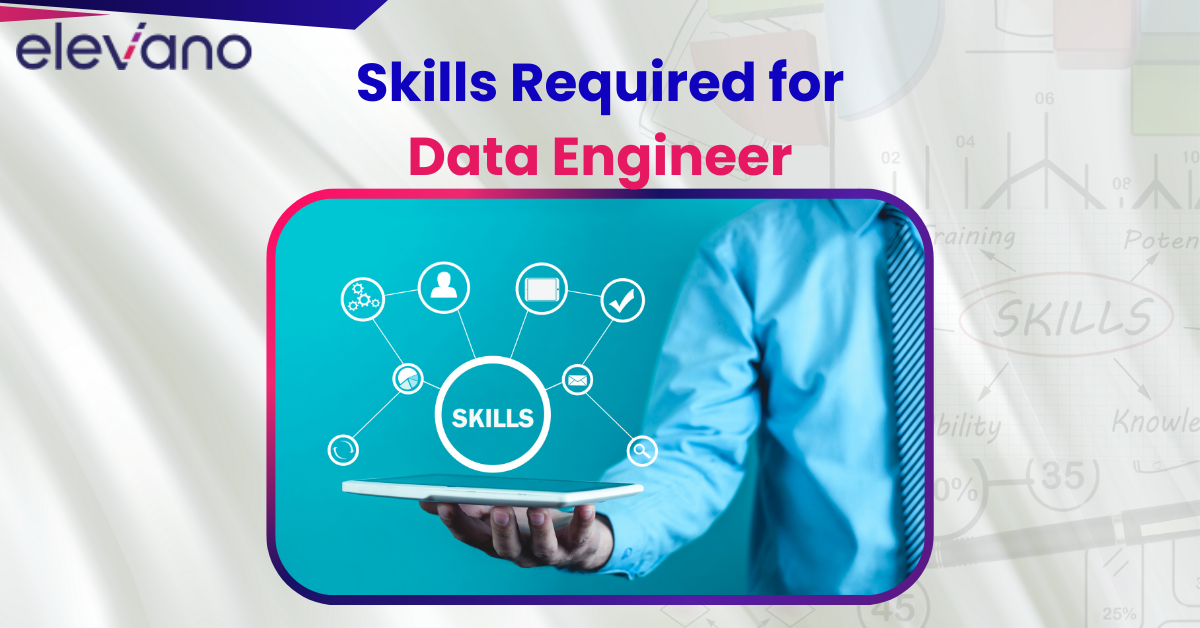Data engineers build the pipelines that turn raw data into something usable. Without them, companies can’t trust the data they use to make decisions. As businesses grow more digital, the need for fast, reliable, and clean data has become a top priority.
But the job isn’t just about writing code or moving data from A to B. It’s about building systems that scale, fixing problems before they break things, and making sure others can work with the data easily. That means knowing more than tools—you need a solid foundation in core skills that hold up even as tech stacks change.
In this article, we break down the 7 essential skills every data engineer should focus on to stay competitive and effective in 2025. Whether you’re just starting out or trying to level up, these are the skills that matter most.
Let’s dive in.
1. Advanced SQL and Data Manipulation
SQL isn’t just a useful skill—it’s the foundation of how data engineers move, clean, and reshape data across systems. Every pipeline starts or ends with SQL, whether you’re pulling data from a warehouse, transforming logs, or building reporting layers.
As a data engineer, you’re not just writing basic queries—you’re writing scalable, efficient, and maintainable SQL that supports large datasets and critical business workflows.
- Why it matters:
You’ll build tables that power dashboards, KPIs, and machine learning models. Messy or slow queries can break downstream processes or delay decisions. Clean SQL keeps data flowing and stakeholders happy. - What to master:
- Core operations – SELECT, JOIN, GROUP BY, WHERE
- Advanced tools – CTEs for readability, window functions for metrics, subqueries for precision
- Performance tuning – use indexes wisely, minimize scans, read query plans
- Real use cases:
- Deduplicating event logs
- Calculating rolling retention using window functions
- Breaking down a transformation into readable layers with CTEs
- Speeding up a slow dashboard query by restructuring joins
Strong SQL isn’t optional—it’s how you make raw data usable and fast. It’s the skill that turns messy source tables into clean, reliable datasets the entire company depends on.
2. Learn Python to Build and Automate Data Pipelines

After SQL, the next skill every data engineer needs is Python. It’s the language behind most of the automation, orchestration, and transformation that happens in modern data stacks. While SQL helps you shape data, Python helps you move it—across systems, on a schedule, at scale.
You’ll use Python to write ETL jobs, clean raw data, connect to APIs, and trigger workflows with tools like Airflow or Prefect. Libraries like Pandas make it easy to manipulate datasets, while PySpark scales that logic across big clusters. Python also helps you bridge SQL logic into production pipelines using tools like SQLAlchemy or dbt.
Even if you’re not a software engineer, knowing how to write clean, functional Python code is key to working in production environments. You’ll also run into Scala or Java in Spark-heavy stacks—they run faster and may support older jobs—but you don’t need to master them. Being able to read or tweak that code is usually enough.
In short, Python is how you turn static queries into dynamic, scalable systems. It’s the tool that helps you move from writing reports to building the pipelines those reports depend on.
3. Learn to Build Scalable Data Pipelines (ETL/ELT)
Once you can query data with SQL and automate workflows with Python, the next key skill is building pipelines. This is the core of data engineering—moving data from raw sources to clean, usable tables that power analytics, reporting, and machine learning.
You’ll often hear about ETL (Extract, Transform, Load) and ELT (Extract, Load, Transform). The main difference is where the data gets transformed—before it lands in storage or after. ETL is better when cleaning is needed early. ELT works well when your data warehouse can handle the processing. Most modern teams use both, depending on the tools and use case.
You’ll also need to decide how data flows—on a schedule or in real time. Batch pipelines run hourly or daily, great for reports and dashboards. Streaming pipelines are used for things like real-time fraud detection, inventory tracking, or user activity feeds.
To build these systems, you’ll work with tools like Airflow to schedule jobs, dbt to transform models, Fivetran to pull in data, and cloud services like AWS Glue or Google Dataflow. Each tool solves a different piece of the puzzle, and knowing which to use—and when—is part of your value as an engineer.
A good pipeline doesn’t just move data. It monitors health, retries failed steps, and ensures downstream tables stay fresh and reliable. It should run quietly in the background, even at scale. Building that kind of system is what separates script writers from real data engineers.
4. Understand Cloud Platforms and Data Infrastructure
Once you know how to build pipelines, the next step is learning where they run—and that’s almost always in the cloud. Modern data engineering relies on platforms like AWS, Google Cloud, or Azure to store, process, and manage data at scale. You won’t be managing physical servers; instead, you’ll work with services like S3, BigQuery, Redshift, and Dataflow to move data faster and cheaper.
Each platform has its own tools, but the concepts are similar. Learn how cloud storage works, how data warehouses handle queries, and how processing engines like Spark or Dataflow run jobs behind the scenes. Start with the platform your company uses, but understand the fundamentals so you can switch if needed.
Building stable infrastructure also means treating it like code. Tools like Terraform or CloudFormation let you define storage buckets, databases, and permissions as files. This makes your setup consistent, repeatable, and easier to debug or scale later. It’s a shift from clicking through dashboards to building environments you can track and version.
You’ll also touch on DevOps practices—using Git, setting up CI/CD pipelines, deploying code safely, and monitoring jobs. You don’t need to be a DevOps engineer, but you do need to work like one when building production systems.
Cloud knowledge turns your code into real-world systems that scale. Without it, your pipelines stay local. With it, your work becomes part of a reliable, automated data platform.
5. Learn Data Modeling, Warehousing, and Architecture Design
Writing clean code isn’t enough. If your data isn’t structured well, everything downstream—queries, reports, dashboards—gets slower and harder to manage. That’s why the fifth core skill for a data engineer is designing how data is stored, connected, and accessed.
Data modeling is about shaping raw data into usable tables. The way you model your warehouse directly affects performance and scalability. You’ll work with patterns like star schemas, where a central fact table links to dimensions for fast, simple queries. Or snowflake schemas, which organize data more deeply at the cost of some speed. Each has trade-offs, and you’ll pick based on use case, not preference.
You’ll also need to balance normalization and denormalization. Normalized tables reduce duplication and improve consistency, while denormalized tables flatten the data for faster reads. Reporting tools usually prefer wide, readable tables. Storage systems prefer lean, efficient ones. Good data engineers know when to use both.
Beyond structure, you’ll decide where data lives—lakes or warehouses. Data lakes (like S3 or Azure Data Lake) hold raw, unstructured files. They’re flexible but harder to query. Warehouses (like Snowflake, Redshift, or BigQuery) are optimized for analytics and structured tables. Newer solutions like Delta Lake or Apache Iceberg blend the two—offering flexibility with structure.
Getting the data model right early prevents downstream rework. It saves you from constant refactoring, broken reports, or slow dashboards. Before you write a pipeline or schedule a job, your model defines the path forward—and how cleanly everything runs.
6. Learn Data Governance, Quality, and Security
No matter how fast your pipelines run or how clean your models are, none of it matters if the data is wrong, untrustworthy, or exposed. That’s why data governance is a must-have skill for data engineers. Your job isn’t just to move data—it’s to protect it, validate it, and make sure others can trust it.
Data quality starts with validation. Before data reaches dashboards or models, you need checks in place—looking for missing values, duplicates, broken types, or outliers. Tools like Great Expectations or dbt tests let you define these checks automatically, flagging issues before they spread.
Then there’s lineage—knowing where data came from and how it changed. This helps you debug faster, track down bad data, and give teams confidence in what they’re using. If something breaks, you should be able to trace it to the exact step that caused it.
Security matters too. If you’re handling sensitive data—customer info, healthcare records, financial transactions—you need to follow privacy laws like GDPR or HIPAA. That means encrypting data at rest and in transit, masking personal fields, and setting access controls based on user roles.
Use role-based access control (RBAC) to make sure only the right people can see or edit the data. Keep access logs so you know who did what and when. If something goes wrong, you’ll need that history to investigate and respond.
Good governance is what keeps data reliable and safe over time. It’s not just a checklist—it’s part of how you design, build, and maintain every data system.
7. Strengthen Communication and Problem-Solving Skills

All the technical skills in the world won’t help if you can’t explain your work or solve problems under pressure. Data engineering is a team sport. You’ll work with analysts, data scientists, and business stakeholders who depend on you to deliver answers—not just pipelines.
Your job often starts with a vague request. A product manager wants “daily user trends,” or finance needs “clean revenue numbers.” You have to dig in, ask the right questions, and turn those needs into data models or workflows that work—without overbuilding or missing the point.
You’ll also be the one fixing broken pipelines, tracking down missing data, or debugging reports that suddenly look off. Fast, focused troubleshooting builds trust with your team and keeps systems stable. Schema changes, bad data loads, or job failures all come to your attention. You need to find and fix the issue without delay.
And since most teams work in sprints or agile workflows, you’ll have to juggle tasks—some urgent, some long-term. You need to know when to drop everything to fix a fire and when to push back on a low-priority request.
Communication and problem-solving aren’t just nice to have. They’re what make your technical work useful, reliable, and respected. Paired with the six skills above, they complete what it takes to grow and succeed as a data engineer.
Conclusion
Being a great data engineer in 2025 isn’t about knowing every tool—it’s about solving problems with clean, reliable systems that others can trust and build on. The best engineers don’t just move data; they understand how it fits into the bigger picture—how it drives decisions, supports teams, and scales with the business.
These seven skills give you that edge. They help you write better code, build smarter pipelines, and make decisions that don’t need to be redone six months later. Whether you’re new to the field or growing into a senior role, focus on mastering the fundamentals that won’t go out of style.
Tools will change. These skills won’t.




